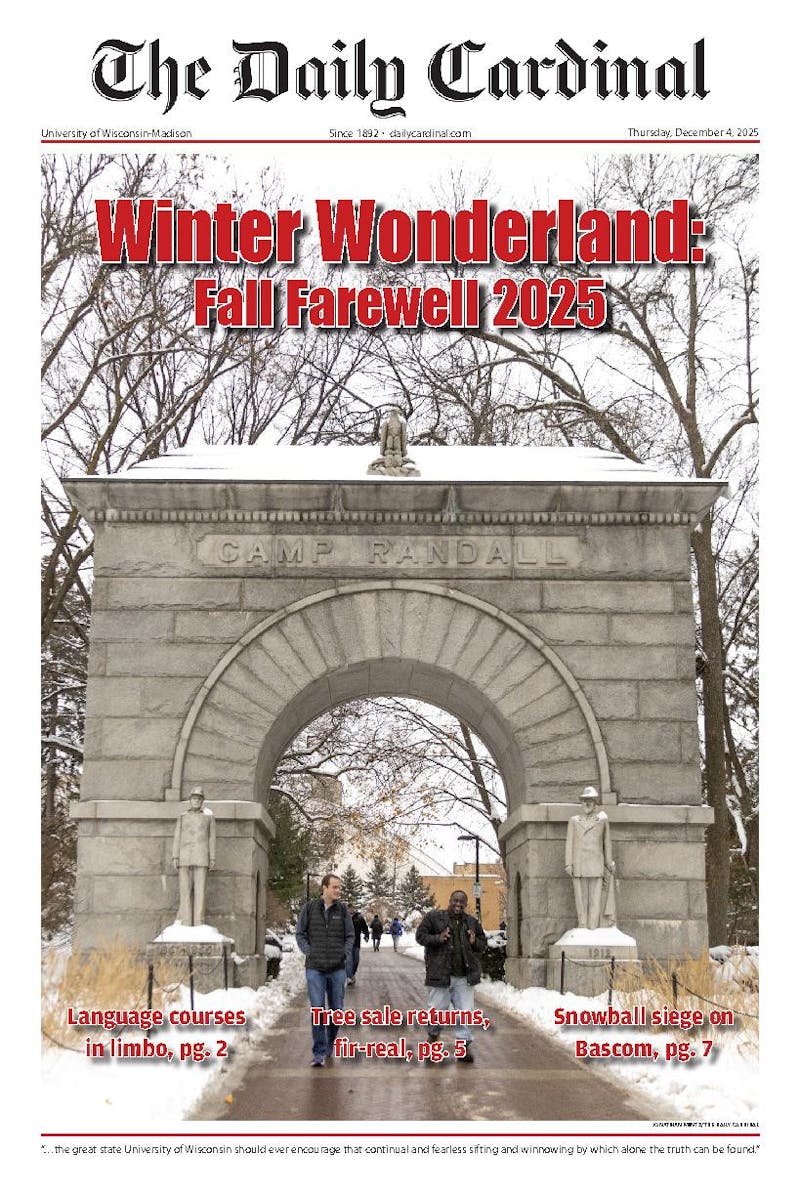Over 40 years ago, Shedd Farley’s parents, Linda and Gene Farley, moved to Verona, Wisconsin from Colorado and settled on a 108-acre plot of land that today is known as the Linda and Farley Center for Peace, Justice and Sustainability.
The plot is home to natural prairies, a green cemetery, nature preserves and a farm incubator system. The farms at the Farley Center, however, don’t grow typical Wisconsin row crops such as corn or soy, instead opting for a wider variety of vegetables, many of which are associated with the culture of the farmer planting them. Farley Center is home to both Latin American and Hmong farmers as well as Russian and Indian immigrant farmers.
“[Immigrant farmers] absolutely meet our mission for equitable treatment of everybody,” said Shedd Farley, the regional director at Farley Center, who also serves as natural cemetery sanctuary coordinator. Farley noted that when his parents arrived in Verona, the first farmers they offered land to were Mexican and Hmong immigrants. After 40 years, Farley Center is still working toward this mission.
“My dad wanted to focus on hardworking immigrants who come to this country not for any nefarious purposes, but they want to come and earn a living,” Farley told The Daily Cardinal. “That's what we allow them to do.”
Farley Center is one of many organizations partnering with immigrant farmers in the Madison area. Rooted, Groundswell Conservancy and the University of Wisconsin-Madison Extension Program also work toward finding plots of land for immigrant farmers.
Martin Ventura, the Urban Agriculture and Community Gardens Specialist at UW-Madison Extension, manages and maintains farms in the Milwaukee area, some of which are farmed by immigrants, particularly in the Hmong community. UW-Extension, Ventura said, had a former partnership with the Hmong American Friendship Association to establish a Hmong heritage garden plot, allowing local communities to farm.
Oftentimes, these informal arrangements are handled by local churches, who serve as liaisons between immigrant farmers and organizations like UW-Extension, allowing trusted entities from both sides to facilitate conversations about finding farming land. Where UW-Extension can aid Hmong farmers, Ventura said, is aiding in the cultivation process, when farmers find themselves in a vastly different climate.
“Within [UW]-Extension, there has been a huge amount of work done to support conversations in which we're coming into better alignment with the needs of Hmong growers in particular,” Ventura said.
Hmong farmers often learn how to farm in tropical climates with nutrient poor soils, fast nutrient cycling and quick primary production, according to Ventura. Implementing a slash-and-burn style of agriculture — where farmers grow intensively for a few seasons before letting the land rest and returning years later — might work perfectly in the tropics, but is less effective in Wisconsin.
“Here in North America, our climate is really different and our soils are fairly different, so the stewardship practices that we need to keep our land productive are also really different,” Ventura said. “One of the harder things that [UW]-Extension has been trying to do is connect with Hmong growers to adapt those instincts which were really well suited to tropical southeast Asia and say ‘certain elements of this practice are not as applicable in an environment like Wisconsin’s.’”
This adaptation process might modify practices to ensure long-term soil health, managing pests and diseases, while simultaneously supporting the economic bottom line and long-term environmental sustainability, according to Ventura.
Hmong farmers, in particular, are important facets of Wisconsin’s network of farmers’ markets.
“In our local ecosystem, our farmers’ markets would be depauperate if not for the presence of growers from southeast Asia,” Ventura said. “One thing we are certain of is that we need these people working the land, contributing to our food security, building their businesses and sharing their expertise and food ways with the rest of North America. We just know they’re absolutely critical components within our food system.”
On a larger scale, immigrant farmers also work to uphold Wisconsin's expansive dairy farms. An April 2023 survey by the School for Workers at UW-Madison estimated that over 10,000 undocumented immigrant workers perform 70% of the labor on Wisconsin dairy farms.
“Our dairy farms would be sunk without immigrant labor,” said Ventura. “There are several states from Mexico which provide the overwhelming majority of our dairy workforce in the state. That's common knowledge.”
With the Trump administration’s crackdown on undocumented immigrants, many farms and farmers have been called into uncertainty. Even at a much smaller scale, Farley hopes the farmers he works with will continue to feel safe on Farley Center land. So far, he hasn’t heard of any of his farmers halting their work.
Despite the uncertainty, Farley and Ventura persist with their work in supporting the immigrant farming community.
“It's important that people grow culturally significant foods because people's culture is what defines them, and people's food ways are absolutely critical to identity,” Ventura said. “Giving people the ability to practice agriculture in a way that makes sense to them based on both their needs for culturally specific and appropriate foods and [culturally bound] ethics of earth care…I think is pretty important.”
John Ernst is the features editor for The Daily Cardinal. He has written in-depth on refugee resettlement, Milwaukee Public Schools and rural issues, including water contamination and immigrant farming. He also reported for the campus news, science and sports desks.






